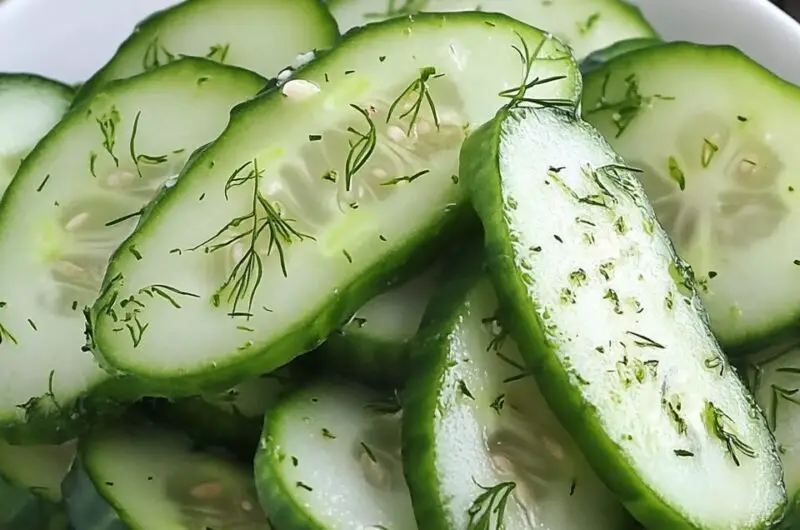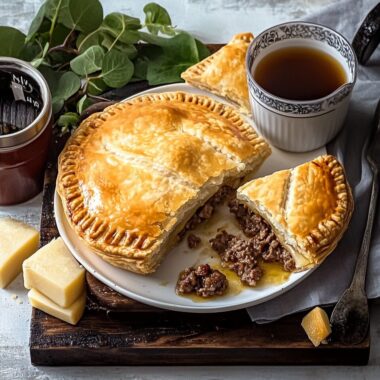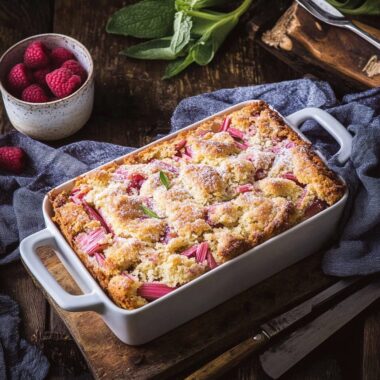The simplicity of these Garlic Dill Cucumbers makes them an irresistible addition to any kitchen. With no need for traditional canning, they’re the ultimate quick pickle packed with bold flavor from fresh garlic and vibrant dill. Whether you’re making use of an overflowing summer garden or just want to enjoy a tangy crunch with your next meal, these refrigerator pickles are a breeze to prepare and enjoy. Serve them alongside sandwiches, grilled meats, or even straight from the jar as a refreshing snack. They’re a healthy, homemade treat that’ll keep you coming back for more.
Full Recipe:
Ingredients:
-
6–8 small cucumbers (Kirby or pickling cucumbers preferred)
-
4–5 garlic cloves, sliced
-
1 bunch fresh dill (about 1/2 cup, chopped or whole sprigs)
-
1 tablespoon salt
-
1/2 tablespoon sugar
-
1/4 cup distilled white vinegar
-
1 1/2 cups water
-
1/2 teaspoon black peppercorns (optional)
Directions:
-
Wash cucumbers thoroughly. Trim both ends and slice into rounds, spears, or leave whole if small enough.
-
In a clean 1-quart jar or container, layer cucumbers with garlic slices and fresh dill. Add peppercorns if using.
-
In a separate bowl, mix together the salt, sugar, vinegar, and water until the salt and sugar dissolve completely.
-
Pour the brine over the cucumbers, making sure they are fully submerged.
-
Seal the jar tightly and refrigerate.
-
Let the cucumbers marinate in the refrigerator for at least 12 hours before serving. Best after 24–48 hours.
-
Store in the refrigerator for up to 2 weeks.
Prep Time: 10 minutes | Cooking Time: 0 minutes | Total Time: 10 minutes + 12 hr marination
Kcal: 10 kcal (per serving) | Servings: 6 servings
The Ultimate Guide to Garlic Dill Cucumbers: A Classic Refrigerator Pickle
Crisp, refreshing, and bursting with bold flavor, garlic dill cucumbers are one of the most beloved types of refrigerator pickles. Whether you’re looking to preserve a garden bounty or just want to add a zesty snack to your fridge, this no-fuss pickle recipe delivers unbeatable results with minimal effort.
In this in-depth article, we’ll explore the origins and appeal of garlic dill cucumbers, the health benefits of pickling, pro tips for getting that perfect crunch, creative ways to serve and enjoy them, and variations that keep things exciting. Whether you’re new to pickling or a seasoned home cook, you’ll find plenty of inspiration here.
What Are Garlic Dill Cucumbers?
Garlic dill cucumbers are a type of quick pickle that relies on vinegar and refrigeration rather than traditional canning techniques. They’re made by soaking fresh cucumbers in a brine infused with garlic, dill, and sometimes peppercorns or other spices. This cold pickling process preserves the cucumbers while imbuing them with bold, savory, and tangy flavors.
The defining characteristics of garlic dill cucumbers are:
-
Their intense garlic aroma
-
The herbaceous punch of fresh dill
-
A pleasant acidity from vinegar
-
A crunchy bite thanks to the quick, unheated pickling method
Unlike shelf-stable pickles, which require heat processing and sterilization, refrigerator pickles are kept cold and consumed within a few weeks. This helps preserve the crisp texture of the cucumbers, making them ideal for snacking or as a crunchy condiment.
A Brief History of Pickling
Pickling has been around for thousands of years. The process is believed to date back as early as 2030 B.C. in ancient Mesopotamia, where cucumbers were preserved in acidic brines. This method allowed people to store food for long periods without refrigeration and added flavor and variety to meals.
Dill pickles, in particular, are rooted in Eastern European and Jewish culinary traditions. Immigrants from these regions brought their pickling techniques to the United States, where dill pickles became a staple of delis and diners, often served with sandwiches or as part of appetizer platters.
Garlic, another staple in European cuisines, was added for its antimicrobial properties and rich flavor. The combination of garlic and dill remains a classic to this day.
Health Benefits of Garlic Dill Cucumbers
Garlic dill cucumbers are more than just tasty they’re also a nutritious snack option. Here are a few reasons you can feel good about reaching for a crunchy pickle:
1. Low in Calories
Refrigerator pickles are made without oil or sugar-heavy syrups. A typical serving contains only a handful of calories, making it a guilt-free way to add flavor to your meals.
2. Hydration and Electrolytes
Cucumbers are made up of over 95% water, so they help with hydration. The salt in the brine also contributes small amounts of electrolytes like sodium, which are essential for cellular function especially after sweating or physical activity.
3. Rich in Antioxidants
Both garlic and dill are packed with antioxidants. Garlic contains allicin, a compound with antimicrobial and immune-boosting properties, while dill provides flavonoids that help combat oxidative stress in the body.
4. Gut-Friendly Properties
While refrigerator pickles don’t ferment like traditional lacto-fermented pickles, they can still promote digestive health. The vinegar content can aid in stomach acid production and digestion. Plus, they make a great gateway for people interested in gut-friendly fermented foods.
Tips for Perfect Garlic Dill Pickles Every Time
Getting that perfect crisp and balanced flavor in a homemade pickle takes a bit of finesse. Here are some tips that elevate your refrigerator cucumbers from good to great:
1. Choose the Right Cucumbers
Kirby or pickling cucumbers are ideal for refrigerator pickles due to their small size, firm flesh, and thin skin. Avoid waxed cucumbers, as the wax can prevent the brine from penetrating properly.
2. Slice to Your Preference
You can slice cucumbers into spears, rounds, or leave them whole if they’re small. Thinner slices absorb flavor faster but may soften more quickly, while whole cucumbers stay crisp longer.
3. Use Fresh, Quality Ingredients
Fresh garlic and dill make a world of difference. Avoid dried herbs or pre-minced garlic for this recipe. If using garlic, slice or smash it slightly to release more flavor.
4. Let Them Chill
Although the pickles can be enjoyed after 12 hours, they develop deeper flavor after 24–48 hours. Patience pays off.
5. Keep It Cold
Store pickles in a clean, airtight container in the refrigerator. They typically last for up to two weeks though they’re often eaten long before that!
Fun Variations to Try
Once you’ve mastered the basic garlic dill cucumber recipe, the possibilities for customization are endless. Here are a few delicious ways to mix things up:
1. Spicy Kick
Add red pepper flakes, sliced jalapeños, or a few chili peppers to the jar for a spicy variation. Perfect for those who love heat.
2. Sweet and Tangy
Add a tablespoon of sugar or honey to the brine for a sweeter flavor that contrasts nicely with the garlic.
3. Asian-Inspired
Swap in rice vinegar and add ginger slices, sesame seeds, and a touch of soy sauce for an Asian twist.
4. Mediterranean Style
Add lemon slices, thyme, and oregano to give your cucumbers a sunny Mediterranean flair.
5. Mixed Veggie Pickles
Throw in carrot sticks, cauliflower florets, or green beans for a mixed pickled vegetable jar.
How to Serve Garlic Dill Cucumbers
These pickles are incredibly versatile. Here are some tasty ways to enjoy them:
-
As a side – Serve with grilled meats, sandwiches, or charcuterie boards.
-
On burgers – Add sliced pickles for a tangy crunch.
-
In salads – Chop and toss them into potato salads, pasta salads, or coleslaw.
-
With cocktails – Try them as a garnish for Bloody Marys or martinis.
-
As a snack – Enjoy them straight from the jar for a guilt-free, crunchy treat.
They’re also a great gift idea simply fill a mason jar with homemade pickles, tie on a ribbon, and you’ve got a thoughtful, edible present.
Conclusion:
Garlic dill cucumbers are a shining example of how simple ingredients can produce extraordinary flavor. With their crisp bite, garlicky tang, and herby dill notes, they’re an easy and satisfying way to elevate everyday meals or indulge in a crunchy, low-calorie snack.
Whether you’re preserving a garden harvest or just looking to try something new in the kitchen, this refrigerator pickle recipe is a winner. It requires no fancy equipment, no canning experience, and very little time making it perfect for both beginners and seasoned cooks alike.








